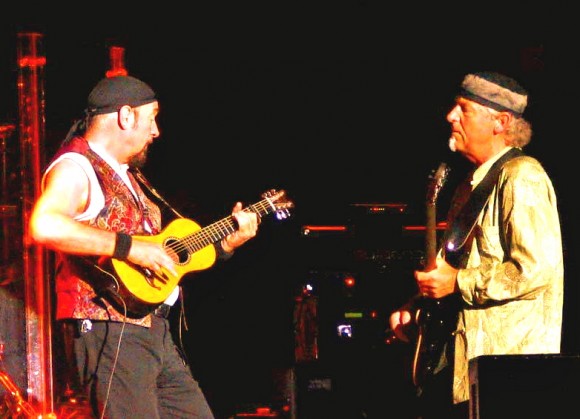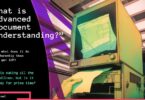aNewDomain — I’m not quite old enough to have been around in Jethro Tull’s heyday. Nevertheless, I was one among many who eagerly anticipated the generation-spanning follow-up to the band’s classic Thick as a Brick single-track album that’s a hallowed treasure of retro-prog-rock fans everywhere.
The original, released in 1972, revolves around a poem written by fictional eight-year-old Gerald Bostock and stands as a criticism of modern society that was actually written by the band’s front man, Ian Anderson. Aside from featuring a whole lot of Jethro Tull’s signature style, including Anderson’s aggressive flute playing, this album is legendary for consisting of just one long track, as opposed to conventional album formats that are more radio friendly. The only time I’ve ever heard Thick as a Brick played in its entirety was on college radio — a drastically shortened version has gotten more radio play throughout the years.
Video: Jethro Tull – Thick as a Brick full
In 2012, Anderson stunned the world by announcing that a new album, Thick as a Brick II (affectionately abbreviated TAAB2) was forthcoming. The idea of a sequel to this idiosyncratic and esoteric album spawned a lot of speculation, but fans didn’t have to wait long — in April of that year, TAAB2 was on the shelves.
Comparing the original 1970s album to its sequel forty years later is a rare opportunity to look at how music, creativity and entertainment narratives have changed. In several ways, the second album brings a uniquely 21st-century approach to the original rock relic.
An Ode to the 2012 News Cycle
One of the biggest changes in TAAB2 is its coverage of decidedly contemporary events. One is the idea of Wall Street bailouts, a topic that has scarred the modern mind. Much of the track “Banker Bets, Banker wins” reads like a column by neo-muckraker Matt Taibbi on all of the various financial monkeyshines that have popped up over the last few years, in the wake of what’s been billed as the biggest financial collapse since the Great Depression. When Anderson sings:
Draconian calls for regulation/are drowned in latte with Starbucks muffin/mortgage meltdown ‘non est mea culpa’/threatened exit/stage left laughing
We know just what he’s singing about, because, well, we’ve all been there.
Nor is financial chicanery the only post-9/11 reality driven home by TAAB2 in elaborate and poetic ways. The track “Old School Song,” at first listen, might make you might think Anderson’s got a British boarding school in mind, but when you take a look at the lyrics sheet, the song is only a thinly disguised commentary on the past decade’s U.S. wars (with British assistance) in Iraq and Afghanistan:
Dad delivered us from the Hun and we reflect his selfless deed/on this desert plain of conflict where special forces/choppers need”
Video: Thick as a Brick 2 =] Old School Song [= Ian Anderson Live – Houston, Tx
In fact, making one of the main characters of the album a veteran of a Middle Eastern war is a central part of what dates TAAB2 so completely — it doesn’t take more than a cursory listen to understand that although the band is going back to the well in terms of style, TAAB2 is firmly grounded in President Barack Obama-era realities. Anderson and the band didn’t have to do this — there are any number of ways to make a follow-up painted in the past — but instead the sequel takes it to us right where we live, a strange juxtaposition with the “old school style” of the band itself.
Futureshock: TAAB2’s Chronological “Multicast”
Part of the background of how Thick as a Brick I and II came about involves Ian Anderson’s specific ideas of what constitutes a concept album. Regardless of your yardstick, both of these albums are abundantly concept-driven. The central aspect of TAAB2, however, reflects the rise of a very modern kind of science fiction — a look at what you might call “dimensionality,” an idea based on concepts like string theory and quantum mechanics. It’s not time travel, per se, but the idea that many different realities can exist together, something that is a premise of everything from popular TV serials to modern Stephen King books.
Video: Thick as a Brick 2 – A Change of Horses
In 17 tracks, Anderson takes us on a voyage through these alternate dimensions, covering five different results as Gerald Bostock’s alternative personas: stockbroker, soldier, homosexual widower, disgraced cleric and shopkeeper.
The album’s not subtle about it, either. The track, “What If’s, Maybes, and Might Have Beens” lays the whole thing out quite clearly for the listener, as Anderson ruminates that, “ripples from a pebble thrown/make tsunami on a foreign shore” and continues to track the modern malaise with his follow-up line, “I would slip right off this high-rise hell/but the elevator stops on every floor.”
All of this what-iffing and might-have-beening, while seemingly simple, is also a complex and very modern approach to ideas pioneered by people like the creators of the original “Back to the Future” series — ideas that have mushroomed in the public consciousness. Slowly and methodically, the ghost stories of the past are replaced by intriguing post-modern boogiemen like genetic modification, dimensionality and artificial intelligence.
By inviting us to look at the idea of alternative realities and dimensions, TAAB2 is becoming part of a very new canon of work in film, music and literature that wants to explore this new and very science-based idea, something hinted at in the work of Albert Einstein and ultimately developed by new generations of quantum physicists.
One Track to Rule Them All
Thick as a Brick 2 has many of the sounds that you hear in the original, including the band’s signature staccato guitar lines, broadly unfurled medieval-esque melodies and Anderson’s signature flute style.
What it doesn’t have is that classic one track feeling. Yes, you can listen to the whole album without breaks, but TAAB2 has 17 clearly separate tracks compiled to create the album. For a lot of fans, this change is disappointing and a little perplexing. Why break up the album into tracks? Is it knuckling under to conventional radio formats, or, more likely, to Apple’s dominant iTunes empire? Though, you can easily buy whole albums on iTunes, so that doesn’t make sense, either.

Jethro Tull Live in Milan, 2006. WikiMedia Commons
Whatever the reason, this multi-tracking is another way that Thick as a Brick 2 has made its way from the distant post-Vietnam past into the brave new world of today.
The intense combination of old and new on this very unique record is part of what makes it a must-listen for young music listeners and everyone else who never lived through the 1970s, but were depressingly present throughout the last ten or fifteen years. This modern fable dressed in elaborate grooves proves that Jethro Tull never lost it, and unlike other 70s chart-toppers, never flinched away from the future.
For aNewDomain, I’m Justin Stolzfus.
Featured Image by courtesy of Steven Depolo via Flickr Creative Commons













